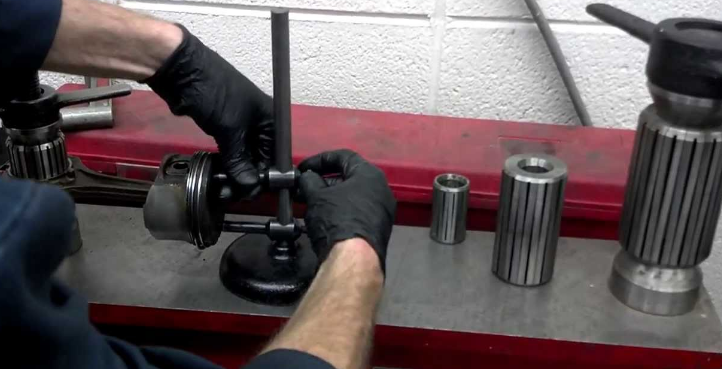How to check a connecting rod for straightness is a vital skill for engine builders, mechanics, and automotive enthusiasts alike. Ensuring that your connecting rods are straight and true is crucial for maintaining proper engine performance and preventing damage to other components. In this article, we’ll discuss the importance of connecting rod straightness and outline a step-by-step process to help you check and confirm the straightness of your connecting rods.
Why Is Connecting Rod Straightness Important? Connecting rods are critical components in internal combustion engines, as they transfer the linear motion of the piston to the rotational motion of the crankshaft. A bent or misaligned connecting rod can result in a range of issues, including uneven wear on the bearings, reduced engine performance, and potential catastrophic engine failure. Checking the straightness of your connecting rods is essential for ensuring the longevity and reliability of your engine.
Tools Needed to Check Connecting Rod Straightness Before you begin, you’ll need to gather some essential tools and equipment:
- Flat work surface: A flat, level, and clean work surface, such as a granite or cast iron surface plate, is necessary for accurate measurements.
- Dial indicator: A dial indicator with a magnetic base or a dial bore gauge is required for precise measurements.
- V-blocks: V-blocks are used to support the connecting rod while measuring.
- Micrometer or calipers: A micrometer or calipers will be needed to measure the connecting rod’s dimensions.
Step-by-Step Guide to Checking Connecting Rod Straightness
- Clean and Inspect the Connecting Rod: Begin by thoroughly cleaning the connecting rod to remove any dirt, oil, or debris. Visually inspect the connecting rod for any obvious signs of damage, such as cracks or excessive wear.

- Place the Connecting Rod on V-Blocks: Position the connecting rod on the V-blocks, with the big end facing downward and the small end facing upward. Make sure the connecting rod is level and centered on the V-blocks.
- Set Up the Dial Indicator: Mount the dial indicator on a magnetic base, and position the indicator’s plunger on the centerline of the connecting rod’s small end. Ensure that the plunger is parallel to the connecting rod and has sufficient travel for measurement.
- Take Measurements: With the dial indicator set to zero, slowly rotate the connecting rod around its axis, taking note of the maximum and minimum dial indicator readings. The difference between the maximum and minimum readings is the amount of bend in the connecting rod. Compare your findings to the manufacturer’s specifications to determine if the connecting rod is within acceptable tolerances.
- Check for Twist: To check for twist in the connecting rod, place the connecting rod on the V-blocks with the big end facing upward. Position the dial indicator’s plunger on the edge of the big end bore, and rotate the connecting rod around its axis. Record the maximum and minimum dial indicator readings, and compare them to the manufacturer’s specifications to determine if the connecting rod has a twist.
By following these steps, you can confidently check your connecting rods for straightness and prevent potential engine problems. Remember, regularly inspecting and maintaining your engine components is essential for optimal engine performance and longevity.
